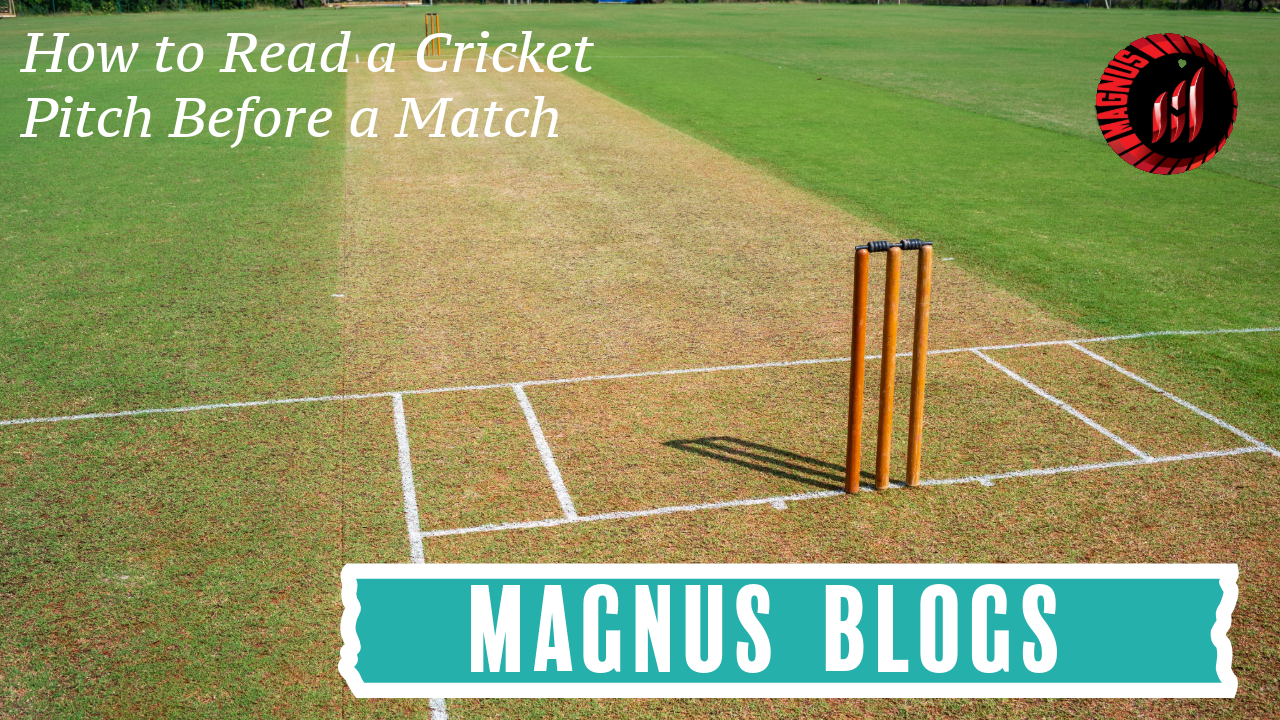In cricket, reading the pitch correctly can make the difference between victory and defeat. The pitch determines how the ball will behave, affecting both batting and bowling strategies. While some pitches favor batsmen with bounce and pace, others assist bowlers with seam movement or spin.
A good captain, bowler, or batsman must understand how to assess the pitch before a match to make the right decisions. In this detailed guide, we’ll explain how to analyze a cricket pitch and adapt strategies accordingly.
Step 1: Understanding Different Types of Cricket Pitches
There are three primary types of cricket pitches, each offering unique challenges and advantages.
1.1 Green Pitch (Seam-Friendly)
- Appearance: Covered with grass, often looks lush and green.
- Behavior: Assists fast bowlers due to extra moisture and movement off the surface.
-
Best Strategy:
- Fast bowlers should bowl full to exploit seam movement.
- Batsmen must play late and leave deliveries outside off-stump.
- Teams winning the toss usually choose to bowl first to take advantage of early assistance.
1.2 Dry & Cracked Pitch (Spin-Friendly)
- Appearance: Light brown, cracks appear as the match progresses.
- Behavior: Becomes rough over time, offering more spin.
-
Best Strategy:
- Spinners should bowl into the rough areas to exploit turn.
- Batsmen must use their feet to counter spin and play shots with the turn.
- Teams winning the toss often choose to bat first before the pitch deteriorates.
1.3 Hard & Flat Pitch (Batting Paradise)
- Appearance: Even surface, little to no grass, and compact hardness.
- Behavior: Ideal for batting, minimal movement for bowlers.
-
Best Strategy:
- Fast bowlers should focus on accuracy and variations like yorkers and slower balls.
- Batsmen should play aggressively, as the pitch offers true bounce.
- Teams winning the toss prefer to bat first and post a big total.
Step 2: Visual & Physical Inspection of the Pitch
Before the toss, players and captains walk onto the pitch to inspect it closely. Here’s how they do it:
2.1 Checking the Surface Texture
- Hard Pitch: If the surface feels rock-solid when tapped, expect good bounce.
- Soft Pitch: A slightly soft pitch can slow the ball down, making batting tricky.
- Cracks & Roughness: Visible cracks indicate spin-friendly conditions later in the match.
2.2 Examining the Grass Cover
- More Grass: Assists fast bowlers with swing and seam movement.
- Less Grass: The pitch will get drier, favoring spinners as the match progresses.
- Evenly Cut Grass: Usually results in a balanced pitch, good for both batting and bowling.
2.3 Feeling the Moisture Level
- A damp pitch will offer early swing and seam movement.
- A dry pitch will become rough, offering more spin later in the game.
- A moderate moisture pitch might be balanced for both bowlers and batsmen.
Step 3: Weather Conditions & Their Impact on the Pitch
The weather plays a huge role in how the pitch behaves throughout a match.
3.1 How Humidity & Cloud Cover Affect the Pitch
- Cloudy conditions: Help fast bowlers swing the ball due to moisture in the air.
- Humid conditions: Make the ball move more, aiding seam bowlers.
- Hot & dry conditions: Dry the pitch quickly, making it better for batting and spin bowling.
3.2 Impact of Sunlight on the Pitch
- If the sun is shining all day, the pitch hardens up, favoring batsmen.
- If the day is overcast, the pitch remains damp, assisting seam bowlers.
3.3 Effect of Rain on the Pitch
- A rain-affected pitch becomes slow and sticky, making batting difficult.
- If the match resumes after rain, fast bowlers benefit from extra moisture in the pitch.
Step 4: How to Adapt Your Strategy Based on the Pitch
Once you have read the pitch, you must adjust your game plan accordingly.
4.1 Bowling Strategy for Different Pitches
| Pitch Type | Fast Bowlers' Approach | Spinners' Approach |
|---|---|---|
| Green Pitch | Bowl full, exploit seam movement | Less effective, bowl tighter lines |
| Dry & Cracked Pitch | Use reverse swing later in the match | Bowl into rough patches for extra turn |
| Hard & Flat Pitch | Mix up lengths, use slower balls & yorkers | Rely on drift and deception |
4.2 Batting Strategy for Different Pitches
| Pitch Type | Batting Approach |
|---|---|
| Green Pitch | Play late, avoid risky shots early on |
| Dry & Cracked Pitch | Use feet against spin, target loose deliveries |
| Hard & Flat Pitch | Attack freely, time the ball well |
4.3 Toss Decision Based on Pitch Conditions
- Bat First If: The pitch is hard, dry, and spin-friendly later.
- Bowl First If: The pitch is green, damp, or offers swing early on.
Cricket bat types, Cricket equipment in usa, Cricket equipment store, Cricket gloves, Cricket helmet, Cricket kit bags, Cricket retailers, Durable cricket gloves, English willow bats, Icc approved helmets., Kashmir willow cricket bat, Latest kashmir willow bat
